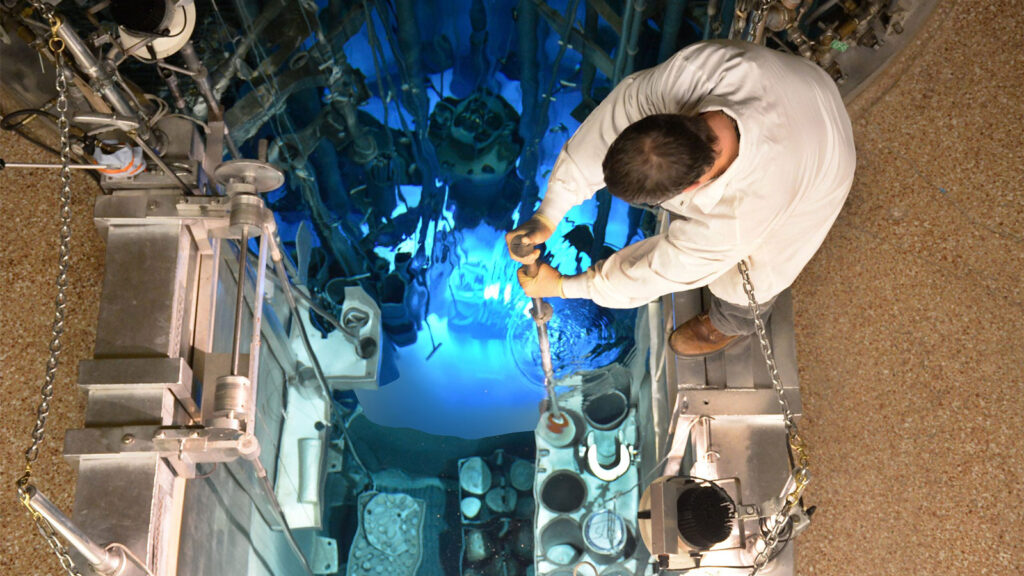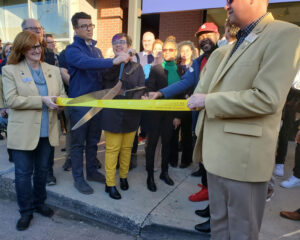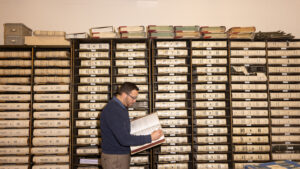NextGen MURR is the next massive research step, but is still possibly 10 years away.
As plans for a new, larger University of Missouri Research Reactor (MURR) slowly unfold, the university’s original MURR facility — the most powerful university research reactor in the U.S. — is expanding, and in December completed its first commercial shipment of another radioisotope used in drugs to treat cancer.
The university broke ground last fall on a $20 million, 47,000-square-foot laboratory and research expansion to MURR, known as MURR West at 1513 Research Park Drive. MURR is the only facility in the country that produces four medical isotopes used in lifesaving treatments for liver, thyroid, pancreatic, and prostate cancer.
Following a ceremonial groundbreaking for the MURR West project in October 2023, the facility’s executive director, Matt Sanford, explained how medical isotopes work.
“Think of the radioisotope as a magic bullet that is carried to the cancer cell,” he said, emphasizing that medical isotopes are “much more targeted” than chemotherapy. He added, “This is precision health medicine that carries the radioactive treatment directly to the cancer cell without damaging healthy cells.”
MURR provides the active pharmaceutical ingredient that is shipped to the drug manufacturer, where it is formulated into the final drug product. The drug is administered intravenously and carried through the bloodstream directly to the cancer cell.
The first weekly commercial shipment of MURR West’s no-carrier-added lutetium-700 (NCA Lu-177) for human use went to the drug company Novartis in December, marking the first phase of a multiyear supply agreement between MURR and Novartis. A MURR news release noted that the shipments were “a significant milestone in years long development project by researchers at MURR.”

MURR is the sole U.S. producer of NCA Lu-177 for cancer treatment. Researchers at MU first identified the potential of the lutetium isotope as a treatment for cancer nearly 25 years ago.
“Together with Novartis, MURR and MU are uniquely positioned to discover, research, and create leading-edge treatments that will benefit cancer patients in Missouri, across the United States, and around the world,” MU system president Mun Choi said in a news release.
Sanford said the agreement between MURR and Novartis is another example of MURR’s more than 50-year history of research and developing crucial radioisotopes.
“From initial research and development to production, quality assurance, and shipping, all of our radiopharmaceutical efforts are focused on the ultimate goals of treating patients and improving lives,” Sanford added.
University officials announced in March 2023 the beginning of an initiative to build the NextGen MURR project at the Discovery Ridge area in southwest Columbia. MURR is a 10 megawatt (MWt) reactor. The NextGen MURR will be a 20 MWt facility, expanding the university’s cancer-fighting research and medical isotope production, creating what university executives are calling an innovation hub for nuclear medicine.
Leaders have reviewed proposals from prospective firms to manage and build the project, which does not yet have an estimated price tag.
“We are still in the early stages” of planning, said Uriah Orland, director of communications for MURR West. In an email response to questions on February 22, Orland said there were no updates available.
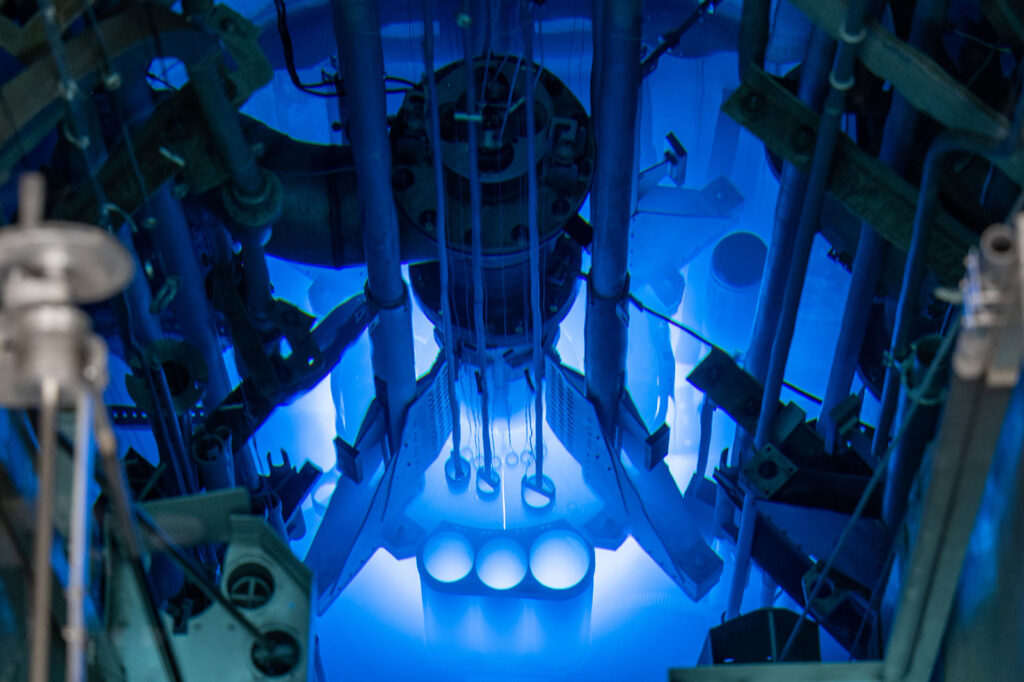
MURR was originally built as a 5 MWt reactor, and began operations in 1966. Its power was increased to 10 MWt in 1974, and it now operates year-round, six-and-a-half days per week. The reactor is currently the only producer in the USA of the medical isotopes yttrium-90, used for the treatment of liver cancer; molybdenum-99, for analysis of heart functions; iodine-131, used for treatment of thyroid cancer; and NCA L-177, used for treatment of pancreatic and prostate cancers.
According to the university, more than 1.6 million patients a year are diagnosed or treated using radioisotopes that MURR produces. MURR NextGen will build on the internationally recognized excellence of MURR and expand the university’s isotope production capabilities, it said.
“The work that we do at MURR saves and improves thousands of lives each and every day,” said Mun Choi, University of Missouri president. “NextGen MURR will produce advanced cancer medicines for the next 75 years and solidify the University of Missouri’s position as the most important resource for medical isotopes in the United States.”
Sanford explained that the MURR West expansion is “mission critical” for the reactor facility’s continued and increased production of radioisotopes to meet additional demand for the product.
“Medical isotopes are critical national resources, and we must secure our domestic supply to treat patients in Missouri and in the United States,” he added. Given the short half-lives (or effectiveness, due to rapid decay) of the medical isotopes, the central location of Missouri in the United States “will ensure rapid deployment to patients, no matter where they live.” He has urged that the process of building NextGen MURR begin as soon as possible.
Meanwhile, the MURR West expansion, scheduled for completion this fall, will enable more collaboration with industry partners and will provide additional space for a growing workforce. A news release that outlined the project said the first floor will provide 16,000 square feet for research initiatives, medical isotope production, and collaborative projects with researchers at MU and industry partners. The second and third floors provide space for employees currently working in temporary buildings, manufacturing support, research and development, regulatory documents and records, and shell space for future expansion.
Sanford notes that the MURR West expansion is the next step toward a new reactor that has already been dubbed “NextGen MURR.” He said that reactor will be “a larger and more powerful tool to expand our leadership in the nuclear sciences and research in medical isotope production.”
Missouri Gov. Mike Parson said at the October groundbreaking ceremony that the research reactor was a prominent topic of conversation when he became governor and met Choi for the first time. They toured the reactor together. He also noted Choi’s statement about increasing MURR’s ability to deliver vital medicine to other locations without patients having to come to where the medicine is.
“And I think that was one of the proudest things that I learned about the reactor, of what all it does, just not for us, but people we’ll never see, people we’ll never know,” Parson said. “And it’s right here in Missouri. It’s right here in Columbia … And if we can do that and we can touch people in society, all over the world, it’s a good day for Missouri. It’s a good day for MU.”
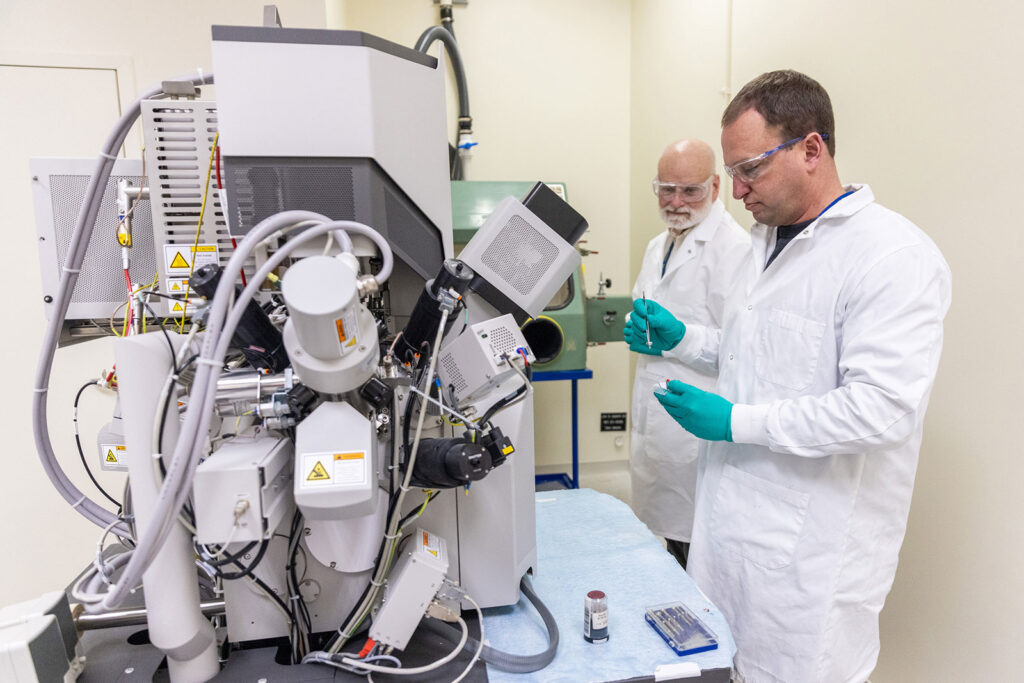
MURR West isn’t entirely all about the production of medical radioisotopes. In January, the facility welcomed the addition of a scanning electron microscope (SEM) that can help researchers make new discoveries in materials science. It also placed MU on a small, prominent list of academic and government facilities, such as the Department of Energy’s Oak Ridge and Idaho National Laboratories, which have similar types of diagnostic tools available for research purposes in radiation environments.
A university news release that heralded the SEM’s arrival stated that scientists can use the SEM to characterize materials like steel or nickel alloys after irradiation in MURR. That knowledge can help engineers select the optimal building materials when developing the next generation of commercial nuclear power plants across the U.S. Since 1990, nuclear power plants have generated at least 20 percent of the total electrical energy used annually in the country, according to the U.S. Energy Information Administration.

John Gahl, professor in the College of Engineering and senior research scientist at MURR, said that testing materials in a nuclear energy environment provides information needed to make data-informed decisions.
“This allows us to examine the structure before and after irradiation, to look for changes in the material’s structure and to determine how materials performance may be affected.”
Another function of MURR West has more to do with geology than nuclear medicine. The Archaeometry Lab at MURR West provides geochemical analysis — think of it as “chemical fingerprinting” — of archaeological specimens for the purpose of determining their provenance, which is their geologic source or the location where they were produced.
The lab uses complex analytical techniques made possible at MURR West, including: neutron activation analysis (NAA), X-ray fluorescence (XRF), inductively coupled plasma-mass spectrometry (ICP-MS), and including laser ablation (ICP-MS), among other techniques. The Archaeometry Lab touts itself as the only such lab in the world providing access to those powerful analytical techniques.
The lab specializes in the compositional analysis of archaeological ceramics, limestone, and obsidian.
